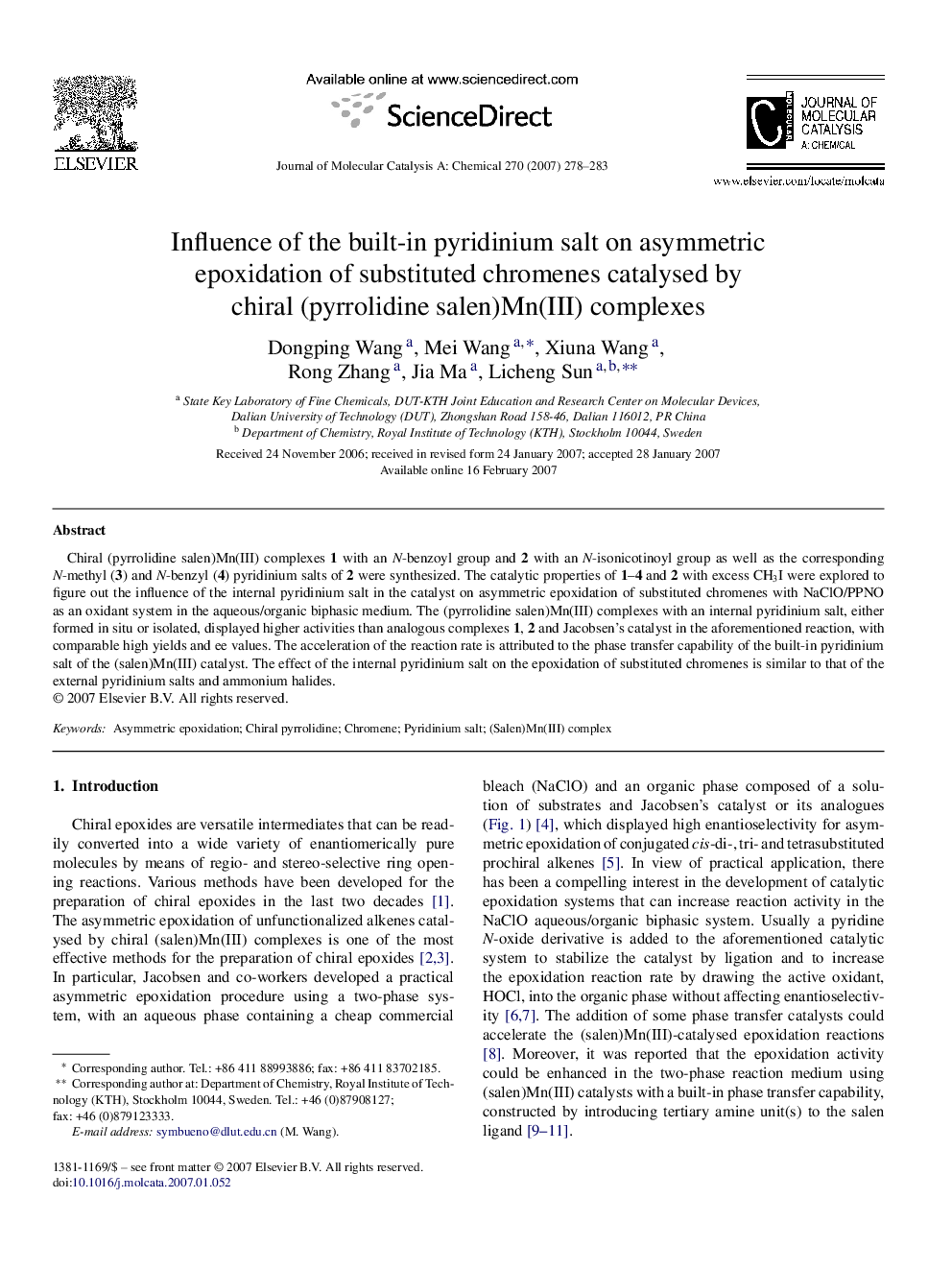| Article ID | Journal | Published Year | Pages | File Type |
|---|---|---|---|---|
| 68050 | Journal of Molecular Catalysis A: Chemical | 2007 | 6 Pages |
Chiral (pyrrolidine salen)Mn(III) complexes 1 with an N-benzoyl group and 2 with an N-isonicotinoyl group as well as the corresponding N-methyl (3) and N-benzyl (4) pyridinium salts of 2 were synthesized. The catalytic properties of 1–4 and 2 with excess CH3I were explored to figure out the influence of the internal pyridinium salt in the catalyst on asymmetric epoxidation of substituted chromenes with NaClO/PPNO as an oxidant system in the aqueous/organic biphasic medium. The (pyrrolidine salen)Mn(III) complexes with an internal pyridinium salt, either formed in situ or isolated, displayed higher activities than analogous complexes 1, 2 and Jacobsen's catalyst in the aforementioned reaction, with comparable high yields and ee values. The acceleration of the reaction rate is attributed to the phase transfer capability of the built-in pyridinium salt of the (salen)Mn(III) catalyst. The effect of the internal pyridinium salt on the epoxidation of substituted chromenes is similar to that of the external pyridinium salts and ammonium halides.
Graphical abstractThe (pyrrolidine salen)Mn(III) complexes with an internal pyridinium salt displayed considerably higher activities than their analogous complexes and Jacobsen's catalyst for asymmetric epoxidation of chromenes in the aqueous/organic biphasic medium, with comparable high yields and ee values. The acceleration of the reaction rate is attributed to the phase transfer capability of the built-in pyridinium salt of the (salen)Mn(III) catalyst. Figure optionsDownload full-size imageDownload as PowerPoint slide
